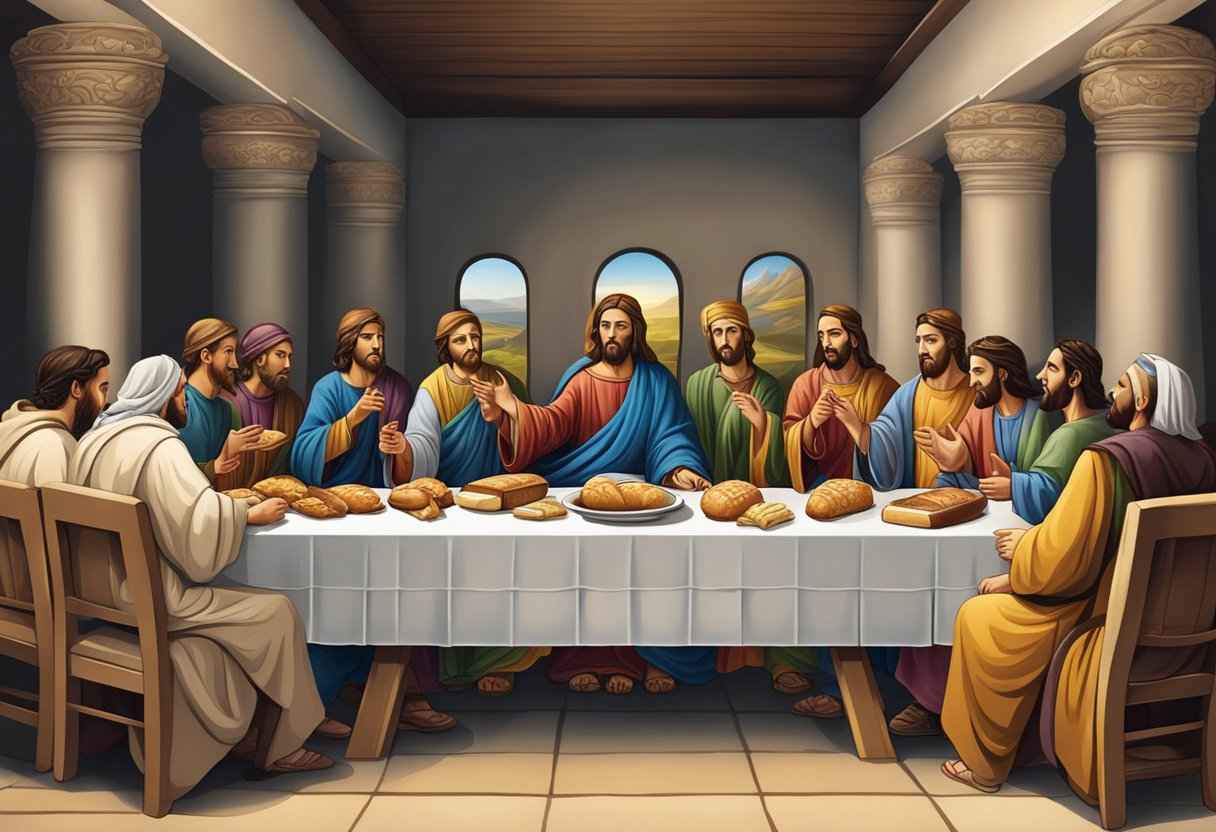The King James Version of the Bible is one of the most widely used English translations, first published in 1611 under the patronage of King James I of England. However, many are unaware that the King James Version does not contain all of the books found in earlier biblical canons and manuscripts. There are several texts that were excluded or removed during the translation and compilation process.
In this article, we will explore some of the key books left out of the King James Bible, looking at their origins, content, and reasons for exclusion. Gaining insight into these omitted texts can provide a fuller picture of the diverse literary traditions that contributed to early Christianity.
Apocryphal/Deuterocanonical Books
The King James Version is based primarily on the Hebrew Masoretic Text for the Old Testament and Textus Receptus for the New Testament. This excluded the apocryphal or deuterocanonical books which were present in earlier versions like the Latin Vulgate and Septuagint. The apocryphal books include additions to Daniel and Esther, along with books like Tobit, Judith, Wisdom of Solomon and 1 & 2 Maccabees.
The key reasons these apocryphal books were excluded were:
- They were not found in the Hebrew Masoretic text
- The early Jewish canon did not include these texts
- Their authorship and origins were uncertain
- Key Protestant reformers like Martin Luther questioned their status as scripture
However, the apocryphal books continued to be included in Catholic and Orthodox Bibles as useful for spiritual edification. They provide insights into Jewish history, culture and beliefs between the Old and New Testament periods.
Key Books Left Out of the King James Bible
| Book | Category | Date | Key Details |
|---|---|---|---|
| Gospel of Thomas | Lost Gospel | c. 140 AD | Collection of 114 sayings attributed to Jesus |
| Gospel of Judas | Lost Gospel | c. 150-200 AD | Portrays Judas in a favorable light |
| Wisdom of Sirach | Apocryphal/Deuterocanonical | c. 180 BC | Jewish wisdom literature |
| 1 Clement | Other Early Christian Writing | c. 96 AD | Letter attributed to Clement of Rome |
| Book of Enoch | Apocryphal/Deuterocanonical | c. 300 BC – 100 AD | Apocalyptic visions ascribed to Enoch |
Lost Gospels
In addition to the canonical four gospels (Matthew, Mark, Luke and John), various other gospel accounts existed in the early centuries of Christianity before the Biblical canon was fixed. These non-canonical gospels are sometimes called the “lost” or “missing” gospels since they were not included in the King James Version.
Some of the key lost gospels that provide accounts of Jesus include:
- Gospel of Thomas – A sayings gospel discovered in the Nag Hammadi library with 114 sayings attributed to Jesus.
- Gospel of Peter – An ancient gospel fragment with a docetic perspective on Jesus’ crucifixion.
- Gospel of Mary – An early gospel where Mary Magdalene is portrayed as a leading disciple of Jesus.
- Gospel of Judas – A Gnostic gospel dating to around 150-200 AD presenting Judas in a positive light.
These lost gospels often contained unorthodox perspectives and diverged greatly from the four canonical gospels. As a result, they were deemed inaccurate portrayals of Jesus by the early church. The canonical gospels were recognized as inspired Scripture while the lost gospels were condemned as heretical writings.
Other Notable Omissions
A few other texts that did not make it into the King James Bible are worth mentioning:
- Book of Enoch – An apocalyptic work ascribed to Noah’s great-grandfather Enoch which was widely read in the early church. Quoted in Jude 1:14-15.
- Shepherd of Hermas – An early Christian text considered scriptural by some in the 2nd and 3rd centuries, but later fell out of favor.
- 1 Clement – An epistle written by Clement of Rome to the Corinthian church in the late 1st century.
While these texts were valued by early Christians, over time they were eclipsed by the canonical books which the church recognized as bearing the authority of Scripture. The early church councils deliberated extensively on which books belonged in the Bible, ultimately excluding many other writings.
Significance for Christianity
The books omitted from the King James Bible provide us a glimpse into the diversity of perspectives and traditions which existed early in Christian history. These books contain insights into popular folklore and the religious milieu of late antiquity.
However, the canonical books chose by the church present a consistent theological message and historically reliable eyewitness accounts of Jesus’s ministry. The excluded texts lack the definitive historical foundation and doctrinal agreement with the apostolic tradition received by the church.
As Christians, we can acknowledge the insights gained from studying the apocryphal literature, while still recognizing the authority and reliability of the canonical Scriptures. The excluded books may fascinate us, but the canonical books contain everything we need for salvation and faith in Jesus Christ. They have stood the test of time and will continue guiding the church till Christ’s return.
Examining Key Books Left Out of the King James Bible
In the first part of this article, we surveyed some major categories of books excluded from the King James Version – the apocryphal/deuterocanonical books, lost gospels, and other early Christian writings not included in the biblical canon. Now we will take a closer look at a few specific examples of these omitted texts. Understanding their content and themes provides insight into the wide range of literature influential on early Christianity.
Additions to Esther
The Book of Esther in the Hebrew Bible tells the story of Esther, a Jewish queen of Persia who saved her people from a genocide plotted by the king’s advisor Haman. However, the Greek Septuagint version of Esther contains six lengthy passages supplementing the Hebrew text. These additions comprise over 100 verses interspersed throughout the book, providing additional details.
Some key additions include:
- Mordecai’s dream foreshadowing Haman’s plot (Septuagint Esther A:1-11)
- Prayers by Mordecai and Esther (Septuagint Esther C:1-30, D:1-16)
- More details of Esther’s banquet and Haman’s downfall (Septuagint Esther C:1-30, D:1-16)
Though not originally in the Hebrew edition, these passages flesh out the story in the Septuagint. The expanded narrative gives greater religious emphasis through the inserted prayers, painting Esther as a model of Jewish piety (Encyclopedia Brittanica). However, since they were absent from the Hebrew Masoretic text, the Additions to Esther were excluded from the King James Old Testament.
Wisdom of Sirach
Also known as Ecclesiasticus, Wisdom of Sirach is one of the most substantial apocryphal books, consisting of 51 chapters of wise sayings and ethical teachings. Written around 180 BC by a scholar named Shimon ben Yeshua ben Eliezer ben Sira, it represents a seminal work of Hebrew wisdom literature that had wide influence in the early church.
Here is a sampling of advice from Sirach:
- “Be quick to hear, but deliberate in answering.” (5:11)
- “Forgive your neighbor’s injustice; then when you pray, your own sins will be forgiven.” (28:2)
- “How good it is to reprove, rather than to be angry!” (20:2)
Like Proverbs and Ecclesiastes, Sirach contains reflective sayings on life, virtue, wisdom, justice, friendship and practical ethics. Numerous early church fathers including Clement and Origen quote Sirach, affirming its value while still noting its lesser status than biblical canon. Despite not being recognized as Scripture, Sirach’s profound ethical teachings had wide influence in the early church.
Gospel of Judas
Discovered in Egypt in the 1970s, the Gospel of Judas is one of the most famous lost gospels. Dated to around 150-200 AD, it offers an unusual Gnostic reinterpretation of Judas’s betrayal of Jesus, painting him as fulfilling his divinely appointed role.
A few excerpts illustrate its unconventional stance:
- Jesus to Judas: “You will exceed all of them [the disciples]. For you will sacrifice the man that clothes me.”
- “Judas lifted up his eyes and saw the luminous cloud, and he entered it.”
- “Their high priests murmured because [Judas] had gone into the guest room for his prayer.”
By contrast, the four canonical gospels unanimously condemn Judas as a betrayer who delivered Jesus to death. This gospel’s sympathetic portrayal of Judas created a scandal when released in 2006. However, scholars argue it reflects an early Gnostic tradition rather than any authentic history of Judas. It offers insight into the divergent views of Judas that circulated in early Christianity.
Epistle of Barnabas
The Epistle of Barnabas is an anonymous Christian treatise from the late 1st to early 2nd century. Though attributed to Paul’s companion Barnabas, it was likely composed in Alexandria by another author. Some early church leaders like Clement of Alexandria and Origen accepted it as Scripture, but it was eventually excluded from the canon.
The epistle includes moral instruction and allegorical interpretation of Jewish laws like dietary restrictions and circumcision. For example:
- “Moreover thou shalt not eat the hare. Why so? Thou shalt not be found a corrupter of boys…” (Barnabas 10:8)
- “Learn: the circumcision of the flesh profiteth nothing towards godliness.” (Barnabas 9:6)
Though ascribed to an apostolic author, the Epistle of Barnabas was superseded in authority and popularity by other texts. While providing some historical insights, its content does not align with canonical Scripture.
Impact on Biblical Literacy
Exposure to the apocryphal texts and early Christian writings illuminates the range of literature that shaped biblical history. However, widespread biblical illiteracy prevents many today from discerning unbiblical ideas that permeated some extra-biblical books.
Grounding ourselves firmly in the doctrine and narrative of the canonical books inoculates against unorthodox teaching. Paul’s letters were already warning the early church against false gospels and misleading christologies that would subvert true knowledge of Christ (Galatians 1:6-9). Proper scriptural discernment is vital.
As Hebrews 4:12 declares, “the word of God is living and active, sharper than any two-edged sword, piercing to the division of soul and of spirit, of joints and of marrow, and discerning the thoughts and intentions of the heart.” Immersing ourselves in the authoritative Scriptures trains our minds to discern truth.
The Sufficiency of the Biblical Canon
While extra-biblical books give us a broader window into early Christianity, the canonical books are wholly sufficient for Christian teaching and practice. As 2 Timothy 3:16-17 proclaims:
All Scripture is breathed out by God and profitable for teaching, for reproof, for correction, and for training in righteousness, that the man of God may be complete, equipped for every good work.
The Bible contains all we need to know for salvation through repentance and faith in Christ. The apocryphal, deuterocanonical and extra-biblical writings may fascinate, but only the recognized biblical canon delivers life-transforming divine truth. The excluded books ultimately detract from, rather than add to, our knowledge of God.
As we appreciate the journey of faith seeking understanding throughout church history, we can marvel at the Spirit’s work in guiding the biblical canon’s formation. The books included passed the tests of apostolic origins, faithful transmission and orthodox theology. Thanks be to God for His provision of Holy Scripture – the fully sufficient words of life!


















